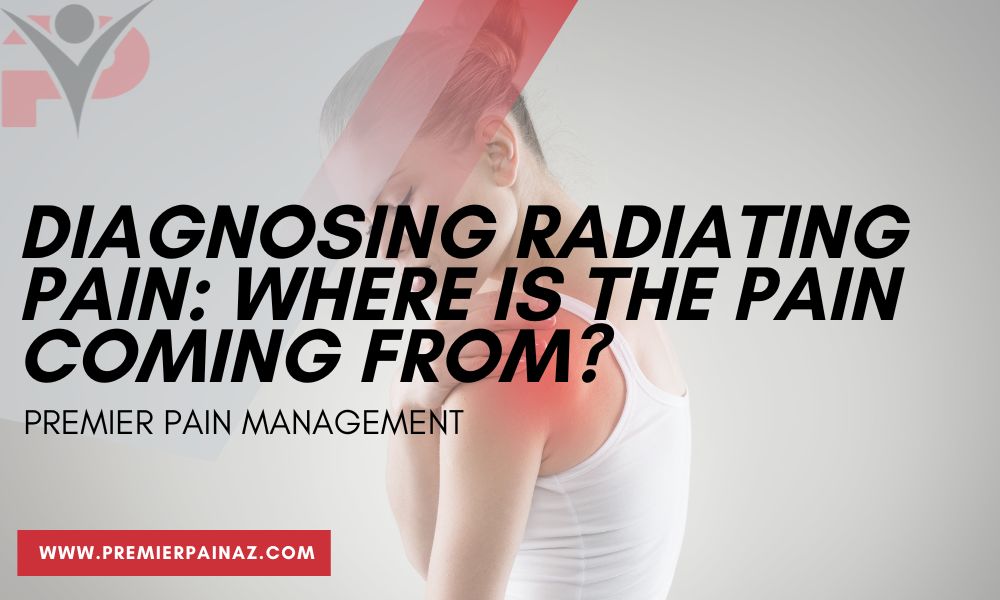Where is this pain coming from? Diagnosing radiating pain
The secret to “radiating pain”… Diagnosis is key to healing.
Part of what has always been challenging for pain management professionals is diagnosing were the root problem in the body lies. Two primary reasons why the source of pain can be difficult to ascertain are pain referral and pain radiation. Both processes result in pain signals firing in parts of the body that are in disparate physical locations from the place where the pain disorder originates. Sciatica is a particularly common form of radiating pain, so we will discuss that particular condition as a case in point.
Referred pain vs. radiating pain
Referred pain is a general term that refers to any type of pain felt in a separate location from its physical cause. Pain that arises from a person’s internal organs often transitions into referred pain, as with pancreatic pain felt in the back.
Radiating pain forms a more direct line from one area to the other, spreading outward from its original location to affect a large swath of the body. If a nerve becomes impinged at the spine, you may hurt throughout the length of the nerve rather than just at the spot where it’s pinched. Some experts believe that pain radiation is a way the body attempts to achieve balance after an area becomes damaged.
Sciatica: one common type of radiating pain
Sciatica is probably the most frequently experienced condition that involves radiating pain. It is pain experienced by the sciatic nerve, which is a nerve running between the rear side of the two legs and the lower back. According to WebMD’s guide on the topic, a particular case of sciatica can include any or all of the following symptoms:
- pain that is felt in the legs or buttocks and is more intense in a seated position
- a sensation of “pins and needles” or burning in either leg
- inability to feel the leg (numbness) or trouble using the muscles
- pain that never goes away, isolated to the right or left side of the buttocks
- pain extending from the lower back outward to the legs, making it excruciating to stand.
Don’t Get Checked Out if You’re Not in Pain
A lot of people believe that there’s no need to see a chiropractor unless you’re in pain. But it’s important to see chiropractors if you want their help in ensuring you take the necessary preventive measure or if there’s an issue you aren’t aware of. Keep chronic pain from happening in the future by knowing what steps to take or lifestyle changes must be done. Find out when you talk to your chiropractor.
Getting help with the right diagnosis & treatment plan
TSciatica is just one type of disorder that involves pain experienced in a location of the body that does not represent the root cause. When you set out to manage and recover from your pain condition, the correct diagnosis is absolutely crucial so that you are treating the source of the pain rather than its symptoms. Let Premier Pain Management be your trusted medical provider: book your free consultation today.

Responsible Pain Management
Same-day appointments available!

